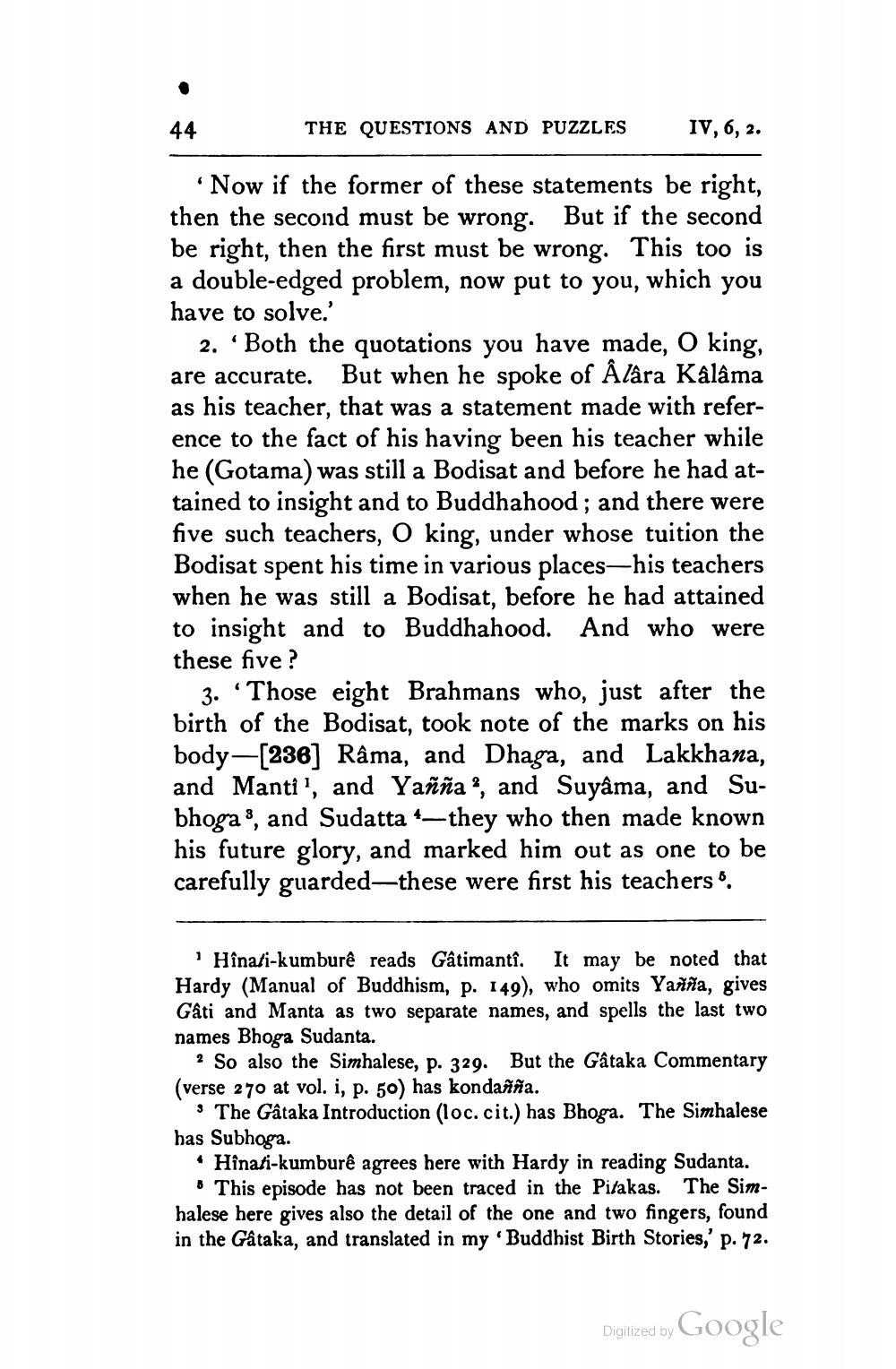________________
THE QUESTIONS AND PUZZLES
IV, 6, 2.
Now if the former of these statements be right, then the second must be wrong. But if the second be right, then the first must be wrong. This too is a double-edged problem, now put to you, which you have to solve.'
2. Both the quotations you have made, O king, are accurate. But when he spoke of Alara Kalama as his teacher, that was a statement made with reference to the fact of his having been his teacher while he (Gotama) was still a Bodisat and before he had attained to insight and to Buddhahood; and there were five such teachers, O king, under whose tuition the Bodisat spent his time in various places—his teachers when he was still a Bodisat, before he had attained to insight and to Buddhahood. And who were these five?
3. “Those eight Brahmans who, just after the birth of the Bodisat, took note of the marks on his body=[236] Râma, and Dhaga, and Lakkhana, and Manti', and Yañña!, and Suyâma, and Subhogas, and Sudatta ---they who then made known his future glory, and marked him out as one to be carefully guarded—these were first his teachers 6.
· Hînati-kumburê reads Gâtimantî. It may be noted that Hardy (Manual of Buddhism, p. 149), who omits Yañña, gives Gâti and Manta as two separate names, and spells the last two names Bhoga Sudanta.
2 So also the Simhalese, p. 329. But the Gâtaka Commentary (verse 270 at vol. i, p. 50) has kondañña.
· The Gâtaka Introduction (loc. cit.) has Bhoga. The Simhalese has Subhoga.
• Hinati-kumburê agrees here with Hardy in reading Sudanta.
• This episode has not been traced in the Pirakas. The Simhalese here gives also the detail of the one and two fingers, found in the Gataka, and translated in my 'Buddhist Birth Stories,' p. 72.
Digitized by Google




